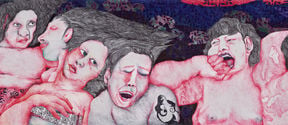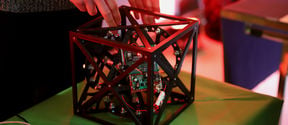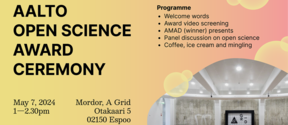Big data helping the smallest infants
The difference between the automated versus manually measured oxygen saturation curves
In a research "Small Babies - Big Data", conducted at the Computer Science Department at the Aalto University, data since 15 years of around 2000 babies with a birth weight less than 1500g was analyzed.
– In total this data is 200 giga bytes. If this whole dataset was printed two-folded in A4 papers, the pile would be 1 km high. Thus managing this large dataset computer models are needed, states Jaakko Hollmén, teaching researcher at Aalto.
If this whole dataset was printed two-folded in A4 papers, the pile would be 1 km high.
– The dataset includes for instance oxygen saturation curves, as well as information on blood pressure, nutrition, medication and weight of diapers in order to evaluate nutritional status. In our first paper, presented last summer, we present the oxygen saturation curves. In the study we try to specify the earlier knowledge regarding the deviations in the oxygen saturation curves and the problems they have caused. In addition, we aim at constructing prediction models related to these, Hollmén continues.
Now the research has continued for 1,5 years. In parallel to the basic data set the researchers are collecting follow-up data as the children grow. The data of the very low birthweight infants‘ first weeks can be combined with the follow-up data, which helps doctors notice problems at the right time.
– The necessity and mutually enriching part of the study is the communication with the doctors at the Children’s Hospital in Helsinki. In cooperation we are able to choose the right research focus, says Hollmén.
By comparing datasets it is possible to develop prediction models for instance on the cognitive abilities or possible future diagnoses of the very low birthweight infants. The goal is that the doctors can access this information when they must make decisions on the first weeks’ care of the very small birthweight infants.
– The prediction model could for instance warn the doctor of some future scenario that could be affected with early care, Hollmen states.
The prediction model could for instance warn the doctor of some future scenario that could be affected with early care.
– Some of the possible complications are paid close attention to. In this study we have focused on predicting the likelihood of retinopathy on the basis of the oxygen saturation measurements. At worst retinopathy can lead to blindness, adds doctoral candidate Olli-Pekka Rinta-Koski.
The research paper on the oxygen saturation measurements of the very small birthweight infants was presented in the summer 2015. The authors were Olli-Pekka Rinta-Koski and Jaakko Hollmen from the Computer Science Department at Aalto University, along with Markus Leskinen and Sture Andersson from the Children’s Hospital in Helsinki. The project is part of the Health Capital cluster led by professor Kimmo Kaski and funded by the Federation of Finnish Technology Industries Centennial Foundation.
More information:
Jaakko Hollmén
Tel. +358 50 326 0110
[email protected]
Olli-Pekka Rinta-Koski
Tel. +358 50 452 6303
[email protected]
- Published:
- Updated:
Read more news

Aalto ARTS alum Vidha Samya’s artwork featured at the Venice Biennale 2024
The Pavilion of Finland presents ‘The pleasures we choose’ at the 60th International Art Exhibition – La Biennale di Venezia until 24 November 2024.
IoT Forge donates EUR 1 million to the School of Engineering
The donation will be used for research and education on the Industrial Internet and digital twins.
Join us for the first Aalto Open Science Award Ceremony
All Aaltonians are welcome – no registration required!